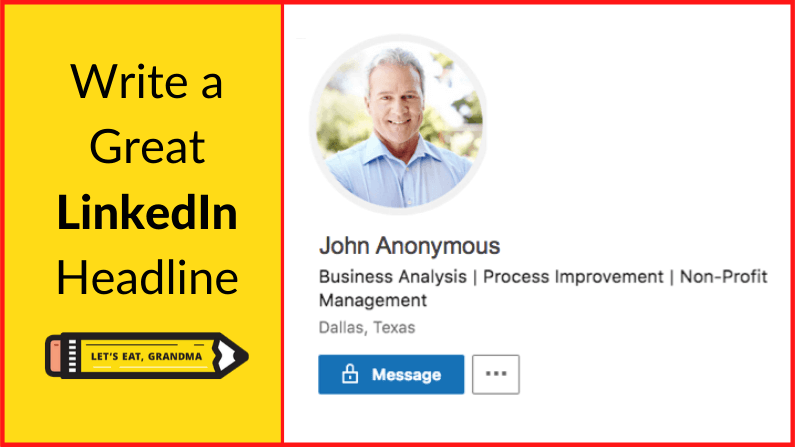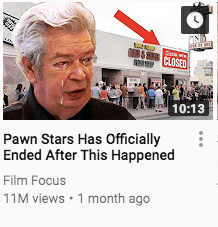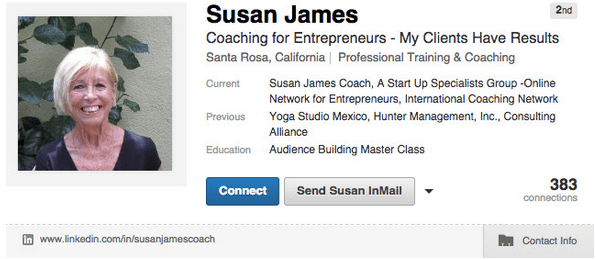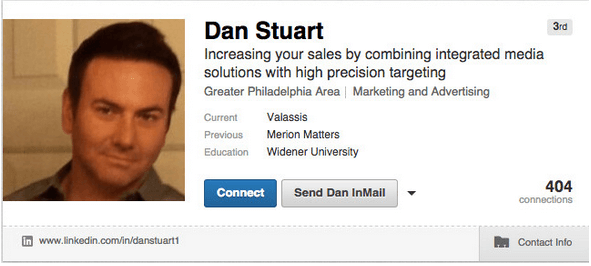What convinces you to read an article? The headline. The same goes for your LinkedIn profile. Check out these 3 steps to writing a good LinkedIn headline and get your profile noticed by recruiters.
Updated March 2023.
By: Chris Villanueva, CPRW | CEO at Let’s Eat, Grandma
Have you ever found yourself scrolling through YouTube and clicking on a video because of the catchy title?
YouTube knows that I like Pawn Stars, so this came up on my recommended feed yesterday.
Did I watch it? … no comment.
Or perhaps you receive dozens of emails per day, but you just had to open one because of an interesting subject line?
A great LinkedIn headline works the same way.
Don’t worry; we’re not talking about clickbait here. But like a YouTube thumbnail or email subject line, your LinkedIn headline should grab someone’s attention. It should pique their curiosity enough that they want to find out more about you and (hopefully) hire you.
If you’re wondering how to write a LinkedIn headline as a job seeker, then you came to the right place.
Why is a good LinkedIn headline so important?
1. Visibility
Your headline, along with your profile picture, is the first thing anyone sees on your profile. It has pride of place because it appears in search results before any decides to click on your profile.

You know who performs a lot of searches on LinkedIn? Recruiters looking for job candidates. (90% of them, in fact.) Those recruiters are more likely to click on your profile if it stands out with an interesting headline.
2. Keywords
Listen, I’m no expert in LinkedIn’s fancy algorithms. But it doesn’t take much research to understand that LinkedIn’s search function puts some weight into the keywords in your headline.
Try searching for a certain type of position in the LinkedIn search bar (e.g. project manager, recruiter) and see who comes up. You’ll probably notice headlines that are driven toward the keyword that you’ve typed in.
Here, I’ll even do it for you. Watch what happens when I type “project manager digital marketing” into the search bar:

Is it any surprise what those headlines contain? (Notice the first result – she would have come up even if I had swapped out one of the terms for “digital media” or “SEO.”)
Now, let’s talk about writing a good LinkedIn headline of your own.
Our 3-step guide for writing a good LinkedIn headline
Bottom line: You need to make your LinkedIn headline targeted and representative of your personal brand.
By writing a great LinkedIn headline, you’ll not only make your profile stand out to viewers. You’ll also make use of some of those precious keywords to make yourself stand out to LinkedIn’s search algorithm. (Recruiter attention = job leads.)
Here’s our tried-and-true 3-step method:
1. Get a clear picture of your target audience.
2. Create a Wordcloud of your target keywords.
3. Write either a keyword-based or mission-based LinkedIn headline.
Sound easy? Let’s explore
1. Get a clear picture of your target audience.

Are you actively seeking a new opportunity as a UX Designer? A Customer Service Manager? A Salesperson?
Do you want to work for a startup, a nonprofit, or a large corporation?
Or, do you just want to show people that you’re a rock-solid project manager in case the right job comes along?
Your answers will tell you what to write in your LinkedIn headline (really, it will dictate how you write your whole profile), so it’s important that you understand your target audience’s needs.
What does understanding your audience look like in action?
Grab a cup of coffee. Print out 5-8 job postings you’re interested in applying to. Don’t feel like printing? That’s fine, just copy/paste them all in a Google doc.
Now, highlight the keywords that look particularly relevant to the job. (Look especially at skills, certifications, prior experience required, and day-to-day duties.)
Do you see a common theme? What are most of these companies are looking for in candidates?
Understanding hiring needs is a key part of looking to the future in your job search. You can’t brand yourself just based on what you’ve done. LinkedIn headlines for job seekers need to be based on what companies are looking for.
2. Create a Wordcloud of your target keywords.
Wordclouds are one of the best ways to brainstorm for visual people. They help you organize your thoughts based on what’s really important in the hundreds of overwrought job postings out there. And they’re free and easy to make!
So, open up another tab and create a Wordcloud with the words you’ve highlighted. Include the quantity of each word, so that the most repeated/important ones appear biggest.
Here’s an example of what that would look like:
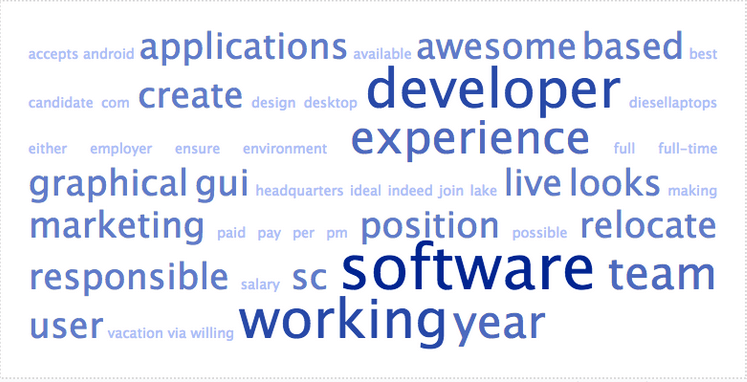
Bonus tip: Print out your Wordcloud and post it on your desk (or wherever else you write your LinkedIn profile.) This is your vision snapshot that will remind you of what to focus on as you’re writing.
3. Write your LinkedIn headline with one of two different routes.
Now that you have aligned your vision and keywords, it’s time to write a great LinkedIn headline.
You will want to make it specific enough so that you snag the interest of your target employers – but broad enough so that you don’t lose out on any opportunities. Unlike your resume, you can’t create a new profile for every job, but you can target multiple jobs with your headline.
There are two different methods you can use in writing a good LinkedIn headline: the keywords-oriented route and the mission statement route.
The keywords route
This is a great approach for active job seekers, especially those targeting multiple jobs with their LinkedIn Headline. We use it for about 90% of our profiles.
Take 2-3 of the key phrases you’ve identified in your Wordcloud and integrate them into your headline.
This approach allows you to not only showcase your best skills but also capture keywords for multiple jobs.
Here’s an example of a good LinkedIn headline we wrote for a client that uses this approach. (We used a stock photo and changed the name to keep their identity private).
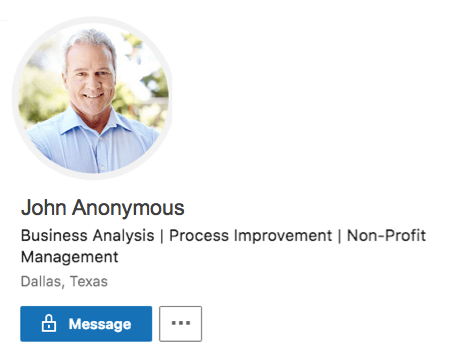
The mission statement route
Have you ever seen a company slogan or mission statement that really got their point across?
Perhaps it’s Indeed.com’s “We help people get jobs,” or the University of Texas’ “What starts here changes the 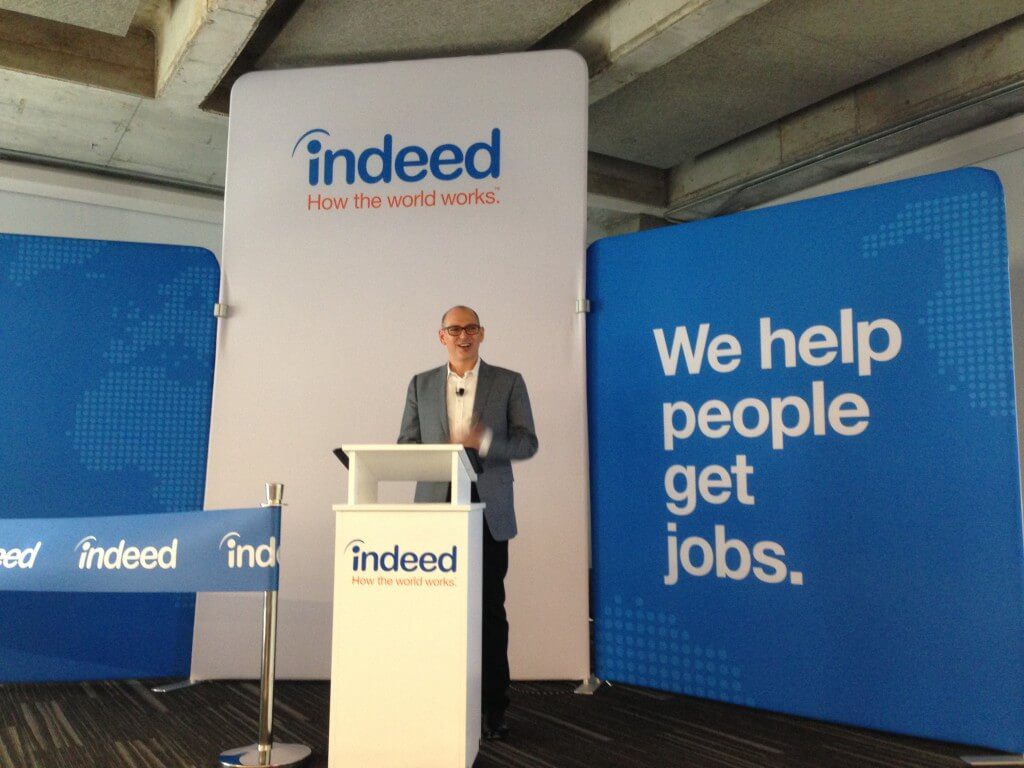
These get you engaged and immediately tell you what the company is trying to accomplish.
Well, you can use the same approach when coming up with your LinkedIn headline.
The headline is supposed to convey your personal brand, right? If you’re an entrepreneur, a creative, or otherwise have a mission-driven career (in business development or nonprofits, for example), your personal brand can look like a mission statement instead of keywords.
This is certainly the more creative route, but it can make a really powerful statement if done correctly. It’s especially effective for a LinkedIn headline that’s seeking a new opportunity but still wants to attract clients to your current business.
Here are some cool examples we found in an article on this approach by Ana Hoffman (who also has a great LinkedIn headline). Notice how engaging, marketable and future-focused they read—these people know their audience and their personal brand.
Be careful though, because trying to use creative language in your LinkedIn headline could fall flat if done incorrectly. You could run the risk of muddying the message. We recommend getting a second opinion after you’ve come up with your creative headline. Show it to a friend or colleague and ask them 1) what types of jobs they think you’re applying for, and 2) if the headline piques their curiosity.
One more tip: If you go this route, you also need to be sure those keywords we mentioned are integrated throughout your profile’s About section, as well as your professional experiences and skills.
Frequently asked questions about LinkedIn headlines
Our expert LinkedIn consultants have been overhauling and optimizing LinkedIn profiles for years. So it’s safe to say we’ve heard just about every question about LinkedIn headline best practices. Here are a few we hear most often.
But … can’t I just keep my position title and company as my headline?
You can … if you want to keep your profile boring and show that you don’t care about branding yourself! This is what most LinkedIn users do, and it’s a surefire way to not stand out from the crowd.
Furthermore, you are more than your position title – and current company.
If you leave your headline as “Project Manager at [Company],” you limit yourself to be branded as just a project manager. And since you actually use many different skills, it does not paint a full picture of who you are. (Are you in computer science? Construction? Healthcare?)
That said, there are a few instances when you could keep that position title and company in your headline:
1. You’re using LinkedIn to represent your company.
I had a client who worked as a Director of Partnerships, and she used her LinkedIn to represent her company and garner more partnerships.
As she was using her profile to foster connections on behalf of her company, having the company in her headline was a good move for clarity.
2. Your current position and company may REALLY make you look good.
I helped a friend who worked as a sales professional for a very prestigious company, and she left her position title and company in her headline. She would get tons of messages from recruiters.
They were impressed that she worked in this coveted position at this high-level company, so they asked if she was seeking a new opportunity. In fact, studies have shown a majority of hires are actually people who are still employed.)
In my friend’s case, showcasing her role and company actually increased job leads, so I’d recommend this if it also sounds like you.
3. You’re nervous about your employer finding out about your job hunt.
Leaving your company out of your LinkedIn headline doesn’t automatically convey that you’re looking for a job. However, if all your coworkers follow this structure, and you suddenly break suit, your employer may notice. If you don’t want to risk that happening, go ahead and keep the company in there.
Shouldn’t a job seeker’s headline say “seeking new opportunities?”
You may be tempted to have your LinkedIn headline say “seeking new opportunity,” because you want to be as clear as possible that you are open for hire.
We don’t recommend just including “actively seeking new opportunities,” because this isn’t specific enough to attract the right people to your profile. LinkedIn already lets you indicate whether you’re “open to new opportunities,” so you don’t need to highlight it again in your LinkedIn headline.
There are better ways to let recruiters know you’re open to new job opportunities, such as changing your settings to Open to Work and adding the green #OpenToWork photo frame
Isn’t this a lot of work for a little headline?
“I don’t want to create a Word cloud – that’s a little much.”
“The headline is only a few words; why am I putting this much work into that?”
“I’m super busy.”
Listen, we get it. This stuff takes work. But you clicked this article because you wanted to create a solid LinkedIn profile that stands above 99% of the other profiles. This takes thought and strategy, and it’s worth the effort.
Additionally, this didn’t just help you learn what to write in a LinkedIn headline or even just a great LinkedIn profile. You can apply this tested, strategic advice to every part of your job search. Start marketing yourself like a brand, and you’ll see results!
If you were inspired by this article on writing a great LinkedIn headline, get ready – this is just the tip of the iceberg!
Click here to browse through more LinkedIn advice
Want to know how our business writing experts can help you optimize your entire LinkedIn profile, including your headline? Schedule a call here.

